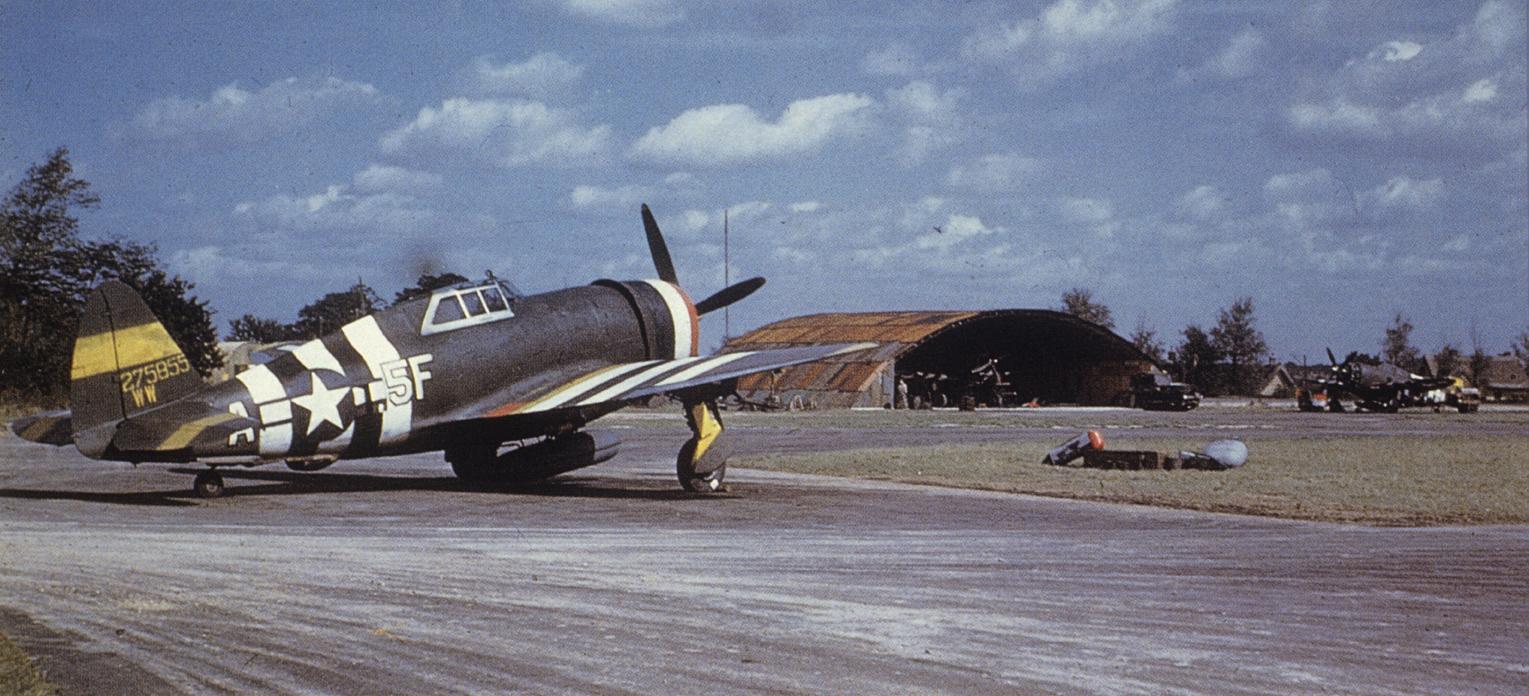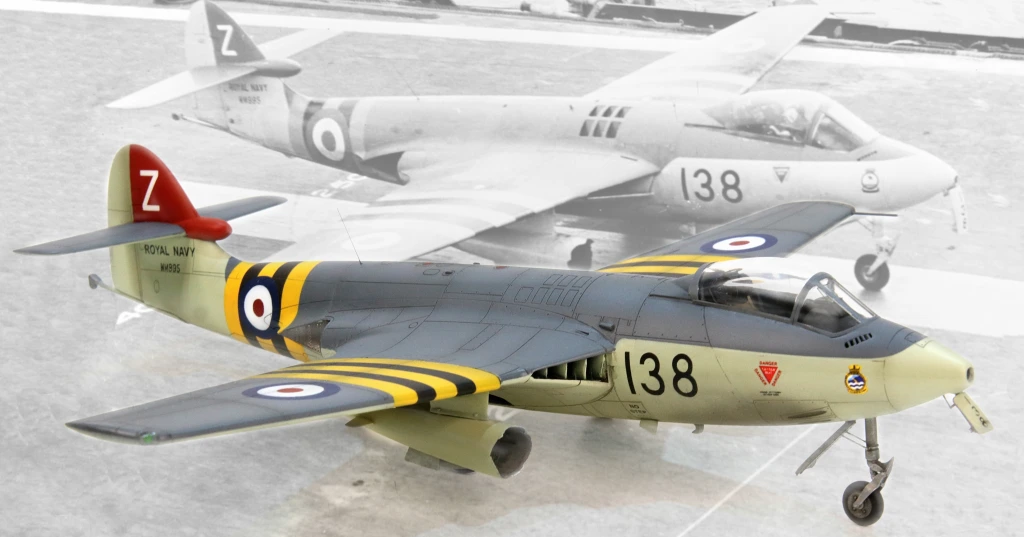The 5th Emergency Rescue Squadron; “Shepherd of the Seas“

The RAF created and refined their Air-Sea Rescue (ASR) as a necessity; based on an island all air operations were over or on the other side of the English Channel the potential loss of aircrew in the water was a problem requiring a solution. One was found and hundreds of downed aircrew were rescued by the Walruses, MTB’s and various other sundry vessels.

When the US Army Air Corps came to England they had no such system and, when they started losing crews in the sea, realised they needed one. In May 1944 representatives of the RAF, the 8th Air Force, and the 65th Fighter Wing met at the Air Ministry to come up with the plan to create the USAAF’s air-sea rescue unit. The 65th Fighter Wing took on the responsibility for air-sea rescue and Captain Bob Gerhart, a former wing controller, was appointed CO of an independent ASR squadron.
The aircraft, ground crews, pilots and all the equipment necessary were borrowed from other fighter groups and Col. Hub Zemke, commander of the 56th Fighter Group was asked to provide “war weary” aircraft and a piece of ground at his Boxted base for them to use. Capt. Gerhart started with 90 enlisted men from 16 different stations and 25 pilots. Remarkably, on 10th May, barely a week after the initial planning meeting detachment “B” of the 65th fighter wing, later to become the 5th Emergency Rescue Squadron, had flown its first mission.

Operations
Whenever a bomber mission was launched, two P-47 “Thunderbolts” of the ASR would take off from Boxted. The aircraft would track the bombers over the channel listening for any distress calls. When a call for help came, one P-47 would keep circling over the spot where the incident occurred. The aircraft would also drop flares or a small dinghy, then return to base to refuel and be replaced by another P-47. The other original Thunderbolt would keep listening in case there were any further incidents. So, all the time bomber formations were over the channel, there were two P-47’s in the air keeping watch. When a pilot or crewman came down in the sea, motor launches would be alerted to pick them up.
Aircraft

Almost all of the aircraft used were war weary P-47’s. At first they had trouble with the weight of extra fuel, flare racks and dinghies, especially at take off. However, once the loading was refined to a more symmetrical arrangement of a dinghy on each wing, a fuel tank on the centre line and the flares stowed behind that, the major problems for the P-47’s on take-off were solved.

The airplanes were identified by red, white and blue striped noses and yellow banded tails. The group’s radio call sign was “teamwork” and the pilots – many of whom volunteered to join the unit after their combat tours were complete – were given the nickname “seagulls”. When the unit moved to Halesworth to accomodate their newly assigned Catalina’s they received their official unit code of the 5th Emergency Rescue Squadron.
Scoreboard
A total of 938 men were rescued by the 5th ASR; they flew a total of 3,616 operational sorties of which 3,520 were effective. In a memo to Lt. General James Doolittle, Commanding General of the 8th Air Force, Jesse Auton said “Most recently as “Colegate” and earlier as “Morelight”, “Warmsun” and “Tackline” call signs, the 65th Fighter Wing has had a vital part in the control of every 8th Air Force mission since 4th July 1943. A constant phase of this control has been for air-sea rescue. The many loyal men who have laboured unceasingly to make rescue more swift and sure, deserve great credit for making what is certain to be a lasting legacy.”
P-47D-R11 Thunderbolt, S/N 42-75855
42-75855 began its operational career with the 434th Fighter Squadron of the 56th Fighter Group based at Boxted. It finished its war as a squadron hack belonging to the 63rd Fighter Squadron. In between, it served with the 5th Air Rescue Squadron, and during that period of its operational career it underwent a remarkable change in appearance.
The gallery of images above tells the story well;
- Picture 1. Named “Tony” it joins detachment “B” as one of the original war weary P-47’s donated by the 56th FG. Note the nose art still present and lack of D-Day Stripes indicating this image was taken some time between 10th May and 5th June, 1944.
- Picture 2. A few weeks later the nose art is gone and D-Day Stripes have been applied.
- Picture 3. From around the same time as Picture 2., 42-75855 has D-Da Stripes and what appears to be a fresh coat of paint. This picture must have been taken between 5th June and ~5th July as the upper D-Day Stripes would have been removed at some point in the first week of July.
- Picture 4 and 5. The D-Day Stripes have been painted over – apparently on both upper and lower surfaces which dates these pictures to early 1945 – though their remnants can still be clearly seen on the wing leading edges. The ailerons have been replaced with unpainted spares. Of note is the now red canopy frame, but more interesting is the canopy has been modified to a Malcolm Hood style, presumably for better pilot visibility.
- Picture 6. I believe this image is taken later than the previous two; the paint work is now very weathered with the original US Dark Green faded and contrasting strongly with the Dark Green applied to cover the D-Day Stripes. There is significant wear on the wing root(s) and 42-75855 looks very war weary indeed.
P-47D-R11, s/n 42-75855 was damaged in a landing accident on Feb 20 1945. Fortunately its pilot that day, Lt. Paul Trudeau was uninjured. It seems quite likely though, that subsequent to repair it was sent over to to the 63rd FS to finish its war as their squadron hack and was presumably struck off charge and scrapped at war’s end.
Hasegawa’s 1/48 P-47D Razorback




A note on the markings and weathering I chose for my model. I chose to represent 42-75855 just before these pictures were taken, but after the D-Day Stripes were painted, over for no other reason than I could not find a Malcolm Hood canopy that would fit. Clearly the original canopy frame was painted red at some point, which I assume to before the Malcolm Hood canopy was fitted. This line of supposition also meant that the weathering would be scaled back from these pictures but likely not too much.


Gallery


References and Credits
- http://www.boxted-airfield.com/groups/5th-emergency-rescue-squadron
- https://9gag.com/gag/a73Ydvx
- https://www.worldwarphotos.info/gallery/usa/aircrafts-2-3/p-47/p-47d-42-75855-tony-5f-a-5th-ers-1944/
Copyright
Copyright: I claim original work and Copyright 2020 for the text in this article and the photos of the model. As usual though, I am indebted for the material used in research listed above in the References and Credits section. Except where noted otherwise, I sourced all other images and photos from the internet and are used under fair-use. Any copyrighted images will be removed or credited forthwith upon request by its rightful owner.



















Leave a comment